TATORTs and their Locations, 2011 to the Summer of 2019
In my analysis with 15 illustrations today, I take a look at the 22 new TATORTs in the first half of 2019, especially at the distribution of women and men in the six departments directing, screenplay, photography, sound, editing and music. Additionally I will look at the first mentioned roles in the scripts and the main casts, which are the roles listed on the ARD TATORTE pages, on average 12 roles per film.
Secondly I added the 2019 values to those of the TATORTs 2011 to 2018, again with regard to the six team divisions, and confront it with my suggestion 2 of 6 (#2v6pN).
Finally, the third part deals with the TATORT locations and copper teams. I checked the gender shares for the six departments there. Are there differences between the cities? Yes, there are. In some cities there has never been a script that was only written by female authors. Actually, 15 out of 28 cities haven’t had them. That’s not good. There was no female director in 9 of the 28 TATORT cities during the investigated years. More on this below.
This article is sort of a sequel to my most recent TATORT- und POLIZEIRUF-analyses Crimes from a Male Perspective und Polizeiruf 110: The Other Top Cop Drama.
The source for my investigations is broadcaster ARD’s TATORT subpage with all the cases and first TV dates, main casts and some information about the crew. The rest I researched mainly on Filmportal and Crew United. For the age analyses of the actors I used the databases Filmportal, Filmmakers, Crew United / Schauspielervideos as well as actors’ and agency websites.
What happened so far in 2019 up to the Summer Break?
Behind the Camera
Usually there are 35 to 36 new TATORTs every year. There is a break in the summer, I investigated the 22 TATORTs up to that point.
Good news is that the proportion of female directors for the 22 TATORTEN is 22.7 %, which is a new high since the start of my evaluations in 2011. Of course, it is still a long way from there to the share of female graduates in directing at film schools – because that is 44 % – but at least it is coming close to the 25.3 % share of female directors in the Crew United database, and it meets the 20 % target that the production company Degeto has set. But here, as already described in Crimes from a Male Perspective, the simultaneous disadvantage of a single-focus target becomes clear: the tunnel view on the directors ignores the other departments. Only one female DoP was responsible for a 2019 TATORT (Jutta Pohlmann at the Lucerne-Swiss Tatort AUSGEZÄHLT / Counted Out). Female sound mixers? Just like in the previous year, there have been none so far. A Frankfurt TATORT had a female composer: Iva Zabkar (DAS MONSTER VON KASSEL / The Monster from Cassel). 12.1 % of the TATORT scripts were written by female authors (summer 2018: 7.1 %), however none independently but in three teams with male authors. No TATORT was written only by a woman or a women’s team. As usual, the stories are told primarily from a male perspective. Once again, the editors are predominately female (22.7 % male editors).
The script writers’ situation is just as male biased as in the year before, female authors were only involved in mixed writers’ teams of three TATORT films.
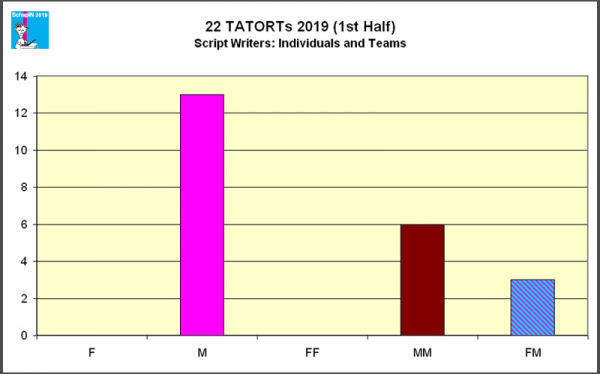
It really makes sense to think about models that focus on several departments at once. For example #2v6pN – for each production 2 of the 6 departments must have a woman at the top (mixed teams are possible). In addition, the NEROPA method is to be used. In 2019 only seven of the 22 TATORTE meet the 2 of 6 condition so far, that is just under a third. Let’s disregard the Vienna and Lucerne films GLÜCK ALLEIN / Happiness Only and AUSGEZÄHLT / Counted Out and only consider the German productions, then it’s five out of 19, that’s just under a quarter. The approach 2 of 6 is simple, has a broader view and gets every production to do something. Quotas can always be met by the others…
TATORTs 2019 – In Front of the Camera
In front of the camera, a significantly lower figure than in 2018 is apparent for the first mentioned roles, namely 30.4 % women (summer 2018: 52.4 %, end of year 43.2 %). There can be various reasons for this, one, that in the case of the investigation duos on the ARD website one or the other name of the two is in first place and in 2019 more men happened to come first. Another reason could be that the TATORTs with male duos, such as those in Cologne and Munich, are produced much more frequently than, for example, Konstanz (which ended in 2016), Ludwigshafen and Hanover with female main characters, but this is nothing new. Three Cologne crime scenes have already been broadcast in 2019.
The proportion of women in the main cast rose slightly compared to the previous year, to 39.4 % (summer 2018: 37 %, end of 2018: 37.5 %). Unfortunately, I can’t evaluate the total cast, because the cast lists are not publically available in a reliable shape.
A message reached me that made me very happy and optimistic at the same time. Yes, it is working! Director Julia von Heinz wrote me about her FÜR IMMER UND DICH (a TATORT set in the Black Forest):
I used NEROPA for my TATORT, which will be broadcast next week: male police officer Liebermeister became female police officer Liebermeister, Jonas from the gas station became JONA, now two great female characters. Supporting roles are thus equal. Thank you for the inspiration.
What would the TATORTs look like if all productions worked with my method? (Contact me if you are interested in information and training – click!)
The Age of the Actors and Actresses
A few years ago I did some age evaluations of casts, which was quite an elaborate job (see also Age: A Picture is Worth A Thousand Words) and which showed that female roles start decreasing from age 40, something that has been confirmend by other more detailed studies since then as well. Recently, a colleague told me that after viewing a number of films in the course of a jury assignment, she had the impression that there were more older female roles. I have therefore analysed the main cast of the 2019 TATORTs:
Unfortunately, the old picture prevails that the highest number of women in terms of the frequency of roles are in the 36 to 40 year-bracket, after which roles decline steadily (or even particularly drastically in the first five years). In the case of male roles, the peak has shifted even further into old age. Whereas in 2013 the peak of the curve were the 51- to 55-year-old actors, it is now those in the 56 to 60-year-old group, which cannot only be due to the old commissioners in Munich and Cologne, because it concerns more than 25 roles. (The Cologne commissioners, for example, are counted three times in the statistics, since there were three Cologne TATORTE in 2019). Particularly striking in 2019 is the group of actors aged 36 to 40, which has a clear peak above the normal curve. As already mentioned, there are only 22 TATORTE, but the separation of the sexes in old age is clearly still there. Here the 2013 figure in comparison:
The TATORTs 2011 until summer 19
TATORTE are a worthwhile object for analysis. On the one hand, it is a series, and because there are sub-series (the cities or copper teams) within this series. The ARD provides some date on their website, part of the crew and some roles (which I take as maincast). They also publish a complete list of all cases over the years. Evaluating other film series is much more difficult.
TATORTE are also the prestige project of the ARD, more is being paid there than in other TV 90 minute-films. That may not apply to every department and every film person, but it should apply to the scripts, for example, and certainly also to many of the leading actors / actresses, directors, DoP’s – but what about the other departments, costumes, make-up? Numbers on the table, please!
Behind the camera
The next self-explanatory image shows the proportion of women in the six departments already examined, for all 314 TATORTs from 2011 to the summer of 2019. The reference values are the share of female graduates and of those in active employment based on the Crew United database:
The next image once again focusses on the authors of the scripts. The men’s overwhelming dominance in storytelling cannot be overlooked. Take a quick glance back to the last illustration shows the female authors reference: 48 % women graduating from film schools and 38,4 % women of those actively working in the industry:
The 2019 data is even worse than the 2011-18 averages in terms of female authors. The men and men’s teams are roughly at the same level, around 59 % and 22.5 % respectively. Bus as already mentioned, in 2019 there were no TATORTs written only by a woman or a women’s team (0 % / 0 % in 2019 compared to just 8 % and less than 1 % for the 2011-18 average). Accordingly, the mixed teams this year are about twice as high as in the eight previous years:
I mentioned the concept “2 of 6” or #2v6pN at the beginning, here we see the statistics for the 314 TATORTE 2011 until summer 2019. You may notice that there is no 50 % reference line. This is due to the fact that not 50 but 100 % should be reached. All films should meet this criterion, not just half of them. This would acutally make the realisation easier than combined quotas for six different departments. I hope that an editorial office or a production company will try out this approach and I assume that all six trades will benefit. Because I don’t expect that all of a sudden only female directors and sound engineers will be employed to meet 2 of 6.
The TATORTs 2011 to 19: On-Screen
And here are the proportions of women among the first mentioned roles and in the main cast. 50 % is nowhere achieved by far. NEROPA could certainly lead to a positive change here:
The TATORT Locations
I thought it might be interesting not to analyze the TATORTE not only by production years but also by the regions, the investigative duos, the cities. I did that for the same period, i.e. 2011 to summer 2019, 315 TATORTs in total in 28 cities. A,ctually, it’s 25 cities. The double cities are Berlin old (top coppers Dominic Raacke / Boris Aljinovic) and Berlin (Meret Becker / Mark Waschke), Frankfurt old (Joachim Król, initially with Nina Kunzendorf) and Frankfurt (Margarete Broich / Wolfram Koch), as well as Hamburg old (Mehmet Kurtuluş) and Hamburg (Til Schweiger). These are the towns where the cop teams changed in the investigated years. The names in brackets are the actors and actresses who play/ed the leads.
Behind the Camera – The Zero Cities
The first diagram shows the number from six departments (director, screenplay, camera, sound, editing, music) not assigned to one or more women. No TATORT has the value zero, which means that for each location there was at least trade that did not have a woman at the top exclusively in at least one film.
The next table shows this in more detail. Here we can see which departments have never been led by a woman or women’s team in at least one film. The last column shows the number of TATORT 90 min. films in the period under review. The particularly low and the particularly high numbers are marked in colour Erfurt with only 2 films can of course not really be compared with Cologne and Munich with 25 films each.
Behind the Camera – The 6-Divisions-Check for the TATORT Locations
The next two figures show the proportions of women in the six investigated trades for two groups of TATORT sites. First those where eight to fourteen films were broadcast during the study period. And then the locations with sixteen to twenty-five episodes. The cities are not sorted alphabetically but by the number of episodes, the less episodes the further to the left. As for the colours: red shades for the male teams or single men, green for the mixed duos, and the cities with female leads are shown in blue patterns. These are in the first illustrations Hannover (Maria Furtwängler) and Konstanz (Eva Mattes):
The high proportion of female directors in Hanover stands out (it corresponds to the proportion of film school graduates), and the unfortunate absence of female screenwriters was already mentioned. In addition, there is the clearly highest proportion of camerawomen, Eeva Fleig and Jutta Pohlmann filmed two TATORTs each from a total of nine. For comparison the female alumni in DoP add up to 25%) and an astonishingly low number of female editors.
We find the highest female author rating in Konstanz, but still below 25 %, also around 20 % are Berlin and Saarbrücken. Katja Schenk with three of the nine TATORTs in Frankfurt is responsible for the high proportion and at the same time the only female sound engineer.
In the second diagram with the more frequent TATORTs, Bremen (Sabine Postel) and Ludwigshafen (Ulrike Folkerts) are depicted in blue with patterns.
In Bremen we see the highest number of female editors: 88.2 %. In fact, these are two editors: Elke Schloo with two and Friederike Weymar with twelve of the seventeen TATORTs.
There are big differences between the locations and thus the regional broadcasting stations. For example, apart from Stuttgart, there is no location without female authors. However, most values are around or below 10 %. The values are generally flatter except for the editing. Only once a female director was allowed to work in Munich (Dagmar Seume at AUSGENUTZT, 2015), the remaining films were directed’sby 24 men. What is the reason for this?
TATORT locations and “2 of 6”
As can be seen from the figure above, the majority of TATORTE do not meet the “2 of 6” criterion. The highest female responsibility was for two TATORTE in Frankfurt and Constance with four trades:
THE HISTORY OF BÖSEN FRIEDRICH 2016, Directed by Hermine Huntgeburth
FOR WHY IT IS TO LIVE LOHNT 2016, directed by Alrun Goette, the last case with Eva Mattes.
Also the TATORTE with three women in trades mostly have a director, so the two Vienna crime scenes 2012 and 2013 and a Kiel crime scene 2014 by Sabine Derflinger, as well as FRÜHSTÜCK FÜR IMMER (Leipzig 2014) by Claudia Garde. However, there is also DIE LIEBE EIN SELTSAMES SPIEL (Munich 2017), where director Rainer Kaufmann worked with three female heads of department, and a couple of crime scenes where there were FM directing and script teams.
In these cities there was no TATORT in which women were (co-)responsible for more than two trades in a single film:
Berlin
Dortmund (7 of 14 completely without women)
Franconia
Hamburg (all 5 without women)
Hanover
Cologne (6 of 25 without women)
Leipzig
Lucerne
Münster
Northern Germany (7 of 11 completely without women)
Saarbrücken
Stuttgart (2 of 16 completely without women, 12 with only one woman, mostly on average)
Weimar (5 of 8 completely without women, the remaining 3 with one each)
Wiesbaden (4 of 6 completely without women, the other 2 movies only with editor Ulrike Hano).
TATORT locations: Stars and their Power
I assume that most people will not have noticed these gaps, nor will most of the leading actors, because they don’t do team statistics but concentrate on learning their text (little acting joke). No, seriously, maybe the numbers open one or the other’s eyes and they look at the next production sheet differently and ask questions. Let’s not forget, those who have been playing TATORT cops for years not only get very high wages, they also can have a say in a number of things. I hope that there are no ‘top coppers’ who will ensure that women are not engaged in the core trades. Unfortunately, this has been related from other formats, e.g. early evening series.
Let’s Think Positive: How would it be if the main actors were to stand up for equal rights in story development and storytelling? For more equality behind and in front of the camera? For more female roles? For NEROPA?
The Locations and the Distribution of Roles
This chart shows the proportions of women in the entire main cast of the locations. Only the Black forest Tatort manages to get more than 50 % female roles in its four films. However, for these crime scenes only an average of 8 roles were published on the ARD website; for Saarbrücken, for example, there were an average of 13 roles in 10 films. We find all locations without any exclusive female screenwriters in the upper half of the diagram:
Final Thoughts
An analysis of the 2019 TATORTE in the six departments directing, screenplay, camera, sound, editing and music reveal a massive gender imbalance on- and off-screen yet again. As far as the TATORT locations are concerned, we don’t find adequate female representation in any of them. And there are a few that are even worse than others. (Dortmund! Hamburg! Northern Germany! Stuttgart! Weimar! Wiesbaden!)
With the 20 % target for female directors, production company Degeto made a first step towards more female participation behind the camera for this format (TATORT is the most popular fictional TV show for 90 min films). However, impulses for the other central departments need to follow urgently, ideally as a positive incentive. More diversity is always an enrichment, and even it ‘only’ starts with breaking up of the male-dominated teams as a first step. This has recently been demanded by committed female screenwriters for their field in their open brand letter to ARD broadcasters and members of the broadcasting council (Tatort Drehbuch. see also “Why aren’t you working with female screenwriters?”).
The basic question remains whether a quota is ideal allround, especially in relation to different categories. In front of the camera it doesn’t make sense anyway. I assume that there are very many film people in positions of responsibility or in interest groups and organisations who are working on ways of achieving a gender-neutral and thus more productive working environment.
In the meantime, as a relatively easy measure, I keep suggesting #2v6pN (Two of Six plus NEROPA) for each individual production. I say “relatively easy to implement” because there are less objective reasons for this than irrational reservations. And these can be reduced. Just give it a try – learning by doing! Get to know NEROPA through a workshop for example. Meet film women from different departments regularly and learn more about their work and their visions.
And if you don’t know a film woman who is a director, a DoP, a sound engineer, a composer, an editor or a screenwriter, you can simply contact the relevant associations (e.g. cinematographers, women film sound network, track 15 composers) or film women’s organisations such as Pro Quote Film, Women in Film and Television Germany and EWA European Audiovisual Network. Or ask the professional associations for direction, screenplay, camera, sound, editing, composition for female members. Most of these are in Germany, find the ones in your country!
Just to recap, in case this got lost: the TATORTs are financed with public money and should therefore be even more committed to equal opportunities.
And to the those arguing “It doesn’t matter whether a man or a woman holds a position, the main thing is quality and competence” – well, then please plan the next 100 TATORT with a strong female bias in front of and behind the camera, because it doesn’t matter whether man or woman, – and there is sufficient competence among all sexes.

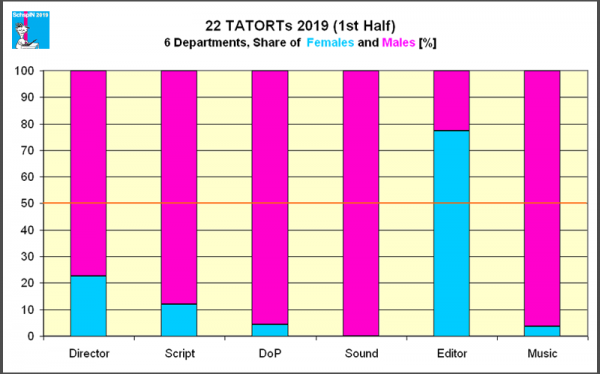
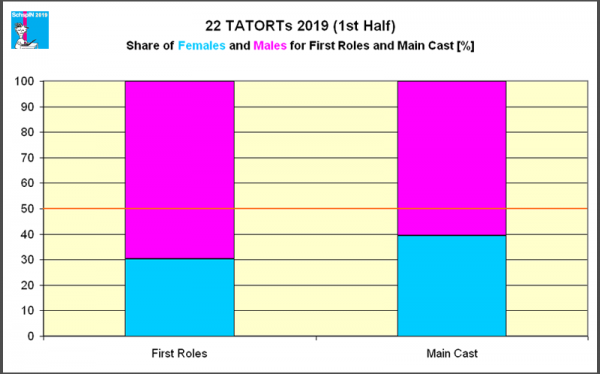
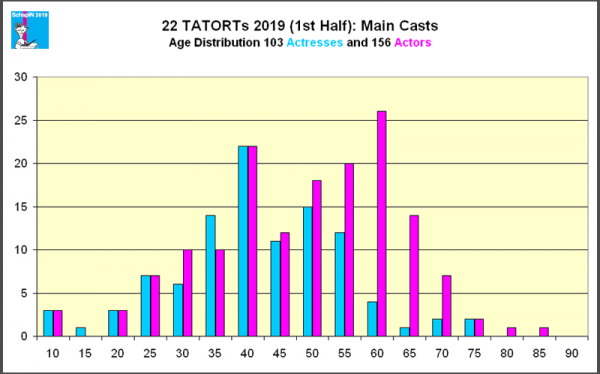
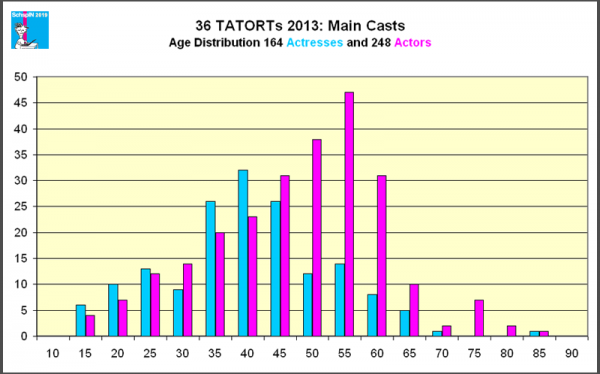
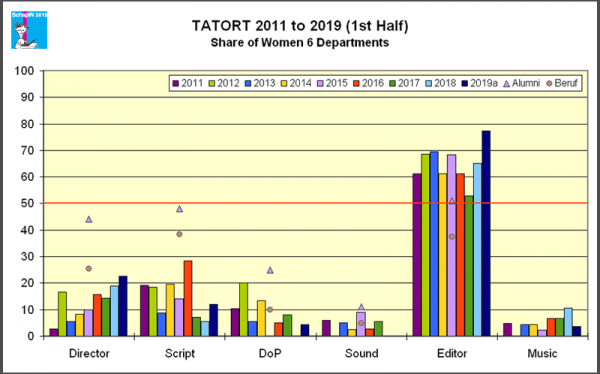
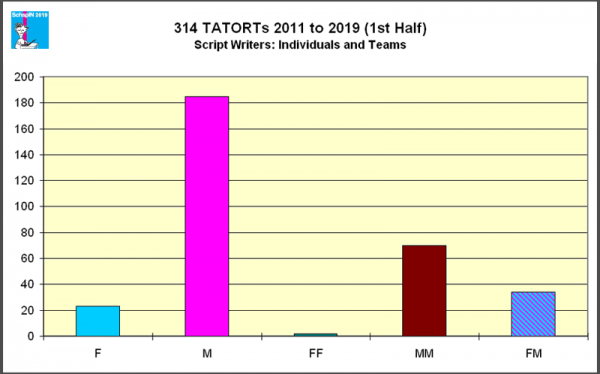
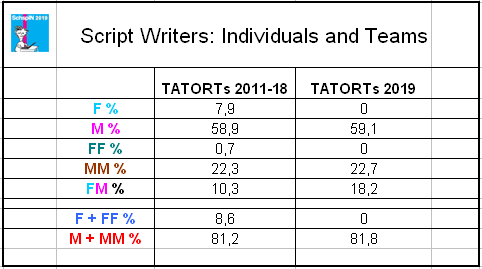
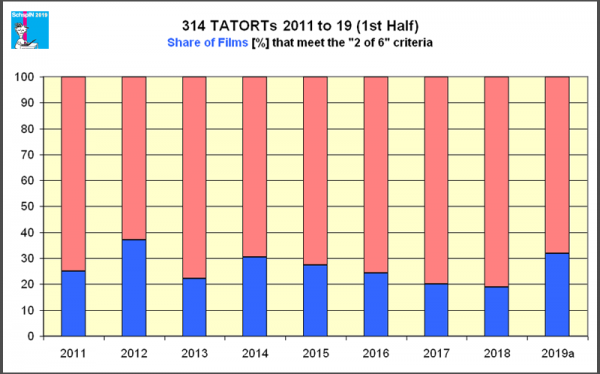
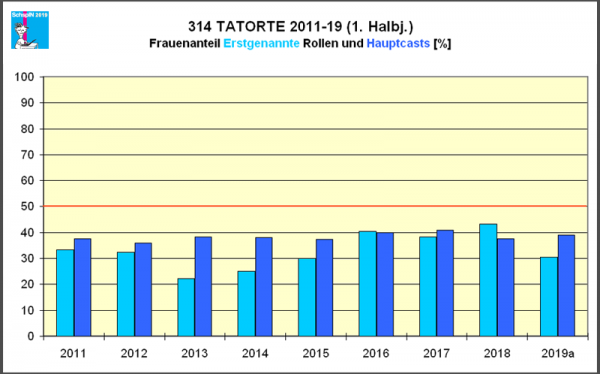
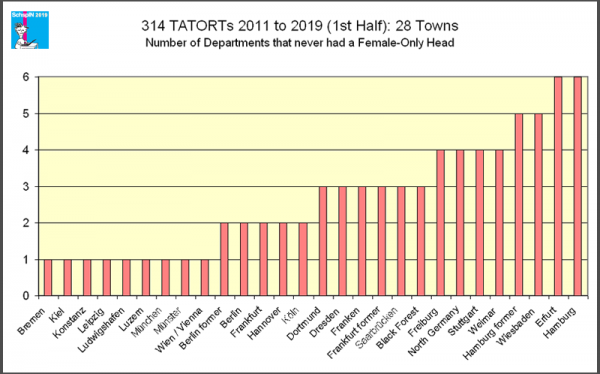
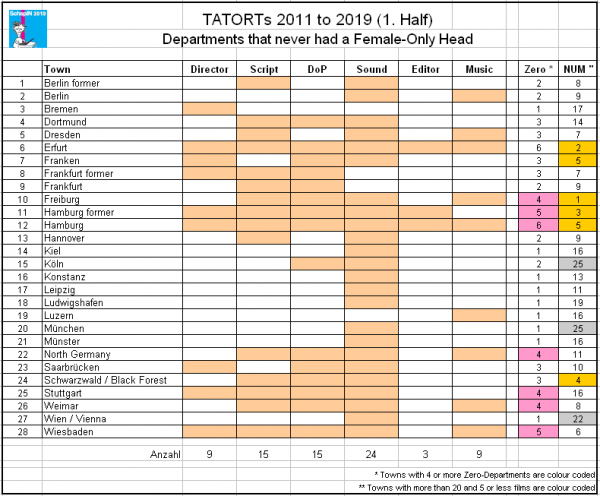
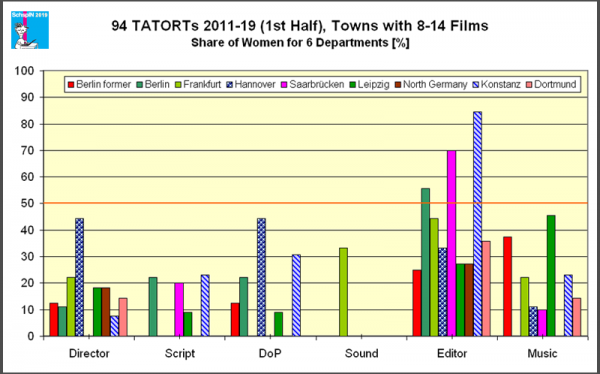
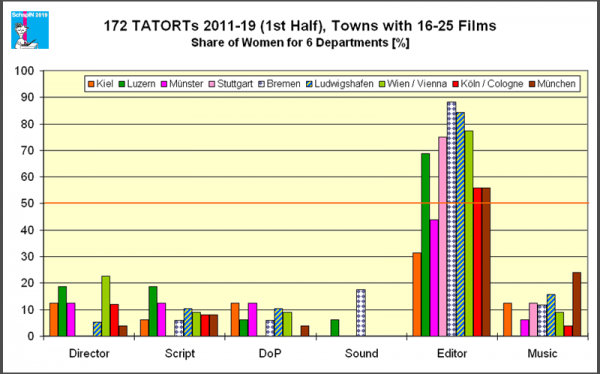
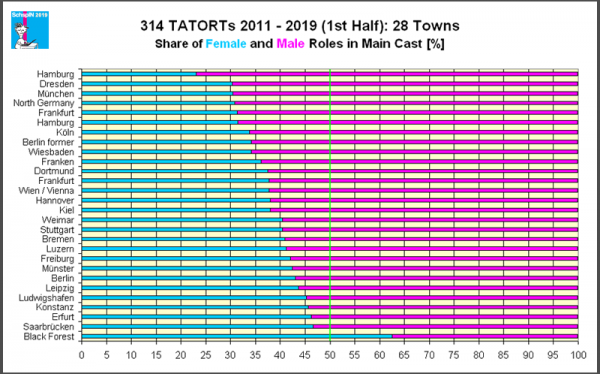
Pingback: Wie die ARD Autorinnen erst benachteiligt und dann ignoriert